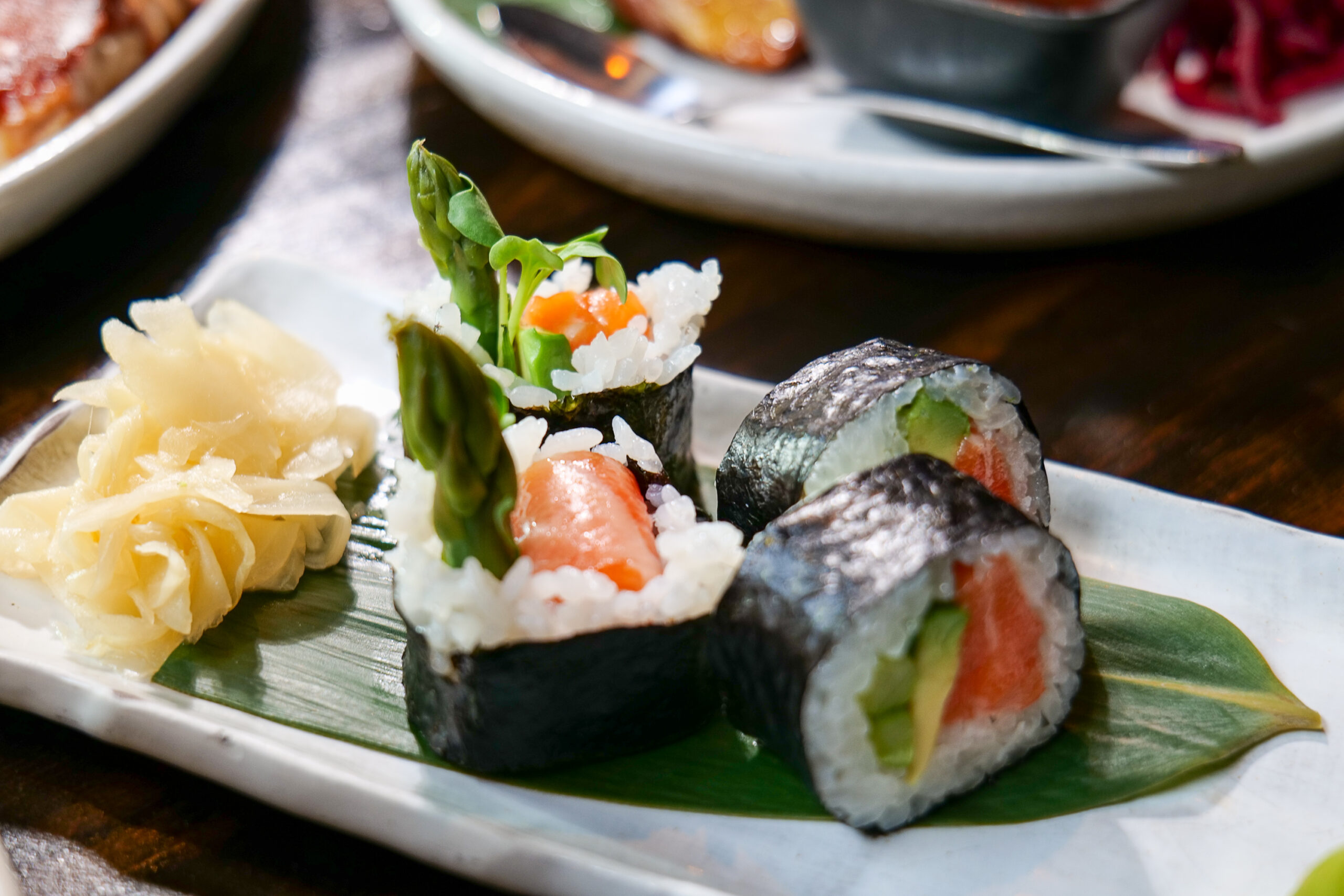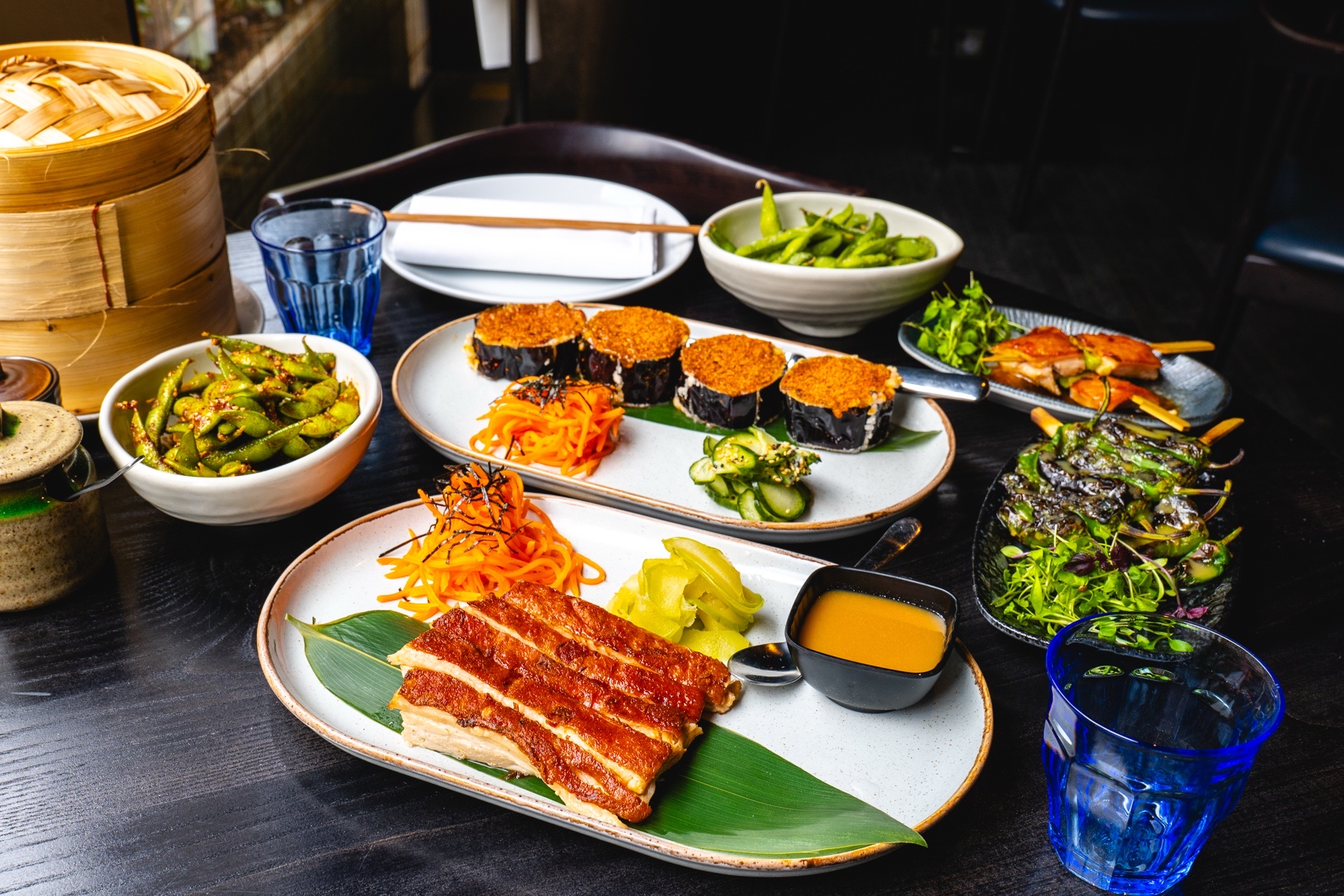Japanese culinary tradition relies on flavours and ingredients deeply rooted in history and cultural significance. Here we explore some traditional Japanese flavours, that have stood the test of time and continue to captivate taste buds worldwide.
Soy sauce
Soy sauce, or shoyu, is a cornerstone of Japanese cuisine, boasting a robust umami flavour. Used as a seasoning and dipping sauce, soy sauce enhances the taste of a myriad of dishes, from sushi to stir-fries. The delicate balance of saltiness, sweetness and umami makes soy sauce an essential component in traditional Japanese cooking.
Miso
Made from fermented soybean paste, miso contributes a profound umami flavour that is well-balanced to dishes. Its depth ranges from sweet to salty, and it comes in various varieties such as white (shiro), red (aka), and traditional (awase). Miso is not just a soup base; it elevates marinades, glazes, and dressings, adding a complex and savoury character to any dish it graces.
You can find miso complimenting the flavours in many of our dishes, including our tenderstem broccoli with orange miso and our avocado miso maki.
Yuzu
The citrus fruit yuzu imparts a bright and aromatic zest to Japanese cuisine. Its distinctive tart flavour, a harmonious blend of mandarin orange, lemon, and grapefruit, enhances both sweet and savoury dishes. Yuzu finds its way into sauces, dressings and desserts, providing a refreshing and uplifting note.
If you want to try yuzu, choose our Padron peppers small plate grilled with yuzu miso, or consider our fried squid small plate, served with yuzu kosho mayo, Japanese spices and red chilli.
Wasabi
Wasabi, a fiery green paste derived from the Japanese horseradish plant, adds a pungent kick to dishes. Traditionally served with sushi and sashimi, wasabi’s distinct heat clears the palate and complements the freshness of raw fish. Its ability to awaken the senses makes it a key part of traditional Japanese dining.
Our delicious portobello mushroom bao buns are served with wasabi mayo and daikon pickle.
Shiso
Also known as Japanese basil, shiso is a herb that brings a unique and slightly spicy flavour to dishes. Available in green and red varieties, shiso is often used as a garnish or wrapped around sushi, such as on our yellowtail ceviche.
Its aromatic essence is reminiscent of mint or basil, and adds a fresh and herbal dimension, making it a versatile ingredient in both traditional and contemporary Japanese cooking.
Bubu arare
Bubu arare, or rice crackers, are a beloved snack in Japan, offering a satisfying crunch and a burst of flavour. These bite-sized delights come in various shapes and flavours, from soy sauce to seaweed.
Often used as a topping for dishes or enjoyed on their own, bubu arare adds a playful and textural element to the culinary landscape. In fact, they perfectly complement our salmon ceviche and tenderstem broccoli small plate.
Dashi
A foundation of many Japanese dishes, dashi is a simple, yet indispensable, broth. Made from simmering ingredients like bonito flakes, kombu (seaweed), and sometimes dried mushrooms like shiitake, dashi provides a delicate umami base.
This umami-rich broth is the secret behind the savoury depth found in soups, stews, and sauces, showcasing the subtlety and complexity of traditional Japanese flavours.
Bonito flakes
Another Japanese stable is bonito flakes, which are dried and fermented tuna shavings that impart a smoky umami flavour to dishes. Often seen atop dishes like okonomiyaki (Japanese savoury pancakes) and takoyaki (fried balls of batter and octopus) – you can find these delicate flakes on our tuna yaki.
These delicate flakes are also a key component in making dashi, the fundamental stock in Japanese cuisine.
Mirin
Mirin, a sweet rice wine, adds a touch of elegance to both savoury and sweet dishes. Its mild sweetness and unique depth come from the fermentation process.
Mirin is often used in marinades, glazes, and simmered dishes, contributing a lustrous finish and a nuanced sweetness that characterizes traditional Japanese cuisine.
Sansho
Also known as Japanese pepper, sansho brings a citrusy and slightly numbing spice to the table. Used as a spice and condiment, sansho enhances the flavour of grilled meats and noodle dishes.
The unique tingling sensation it imparts differentiates it from other types of pepper such as Szechuan, making it a prized ingredient in regional cuisines.
Try these amazing Japanese flavours for yourself
Embrace these amazing flavours and savour them for yourself in a modern Japanese izakaya environment. With each bite, enjoy the unique and intricate mix of tastes that make Japanese cuisine a must-try.
Next time you find yourself in London looking to explore something new, make sure to pay a visit to Flesh & Buns.
















